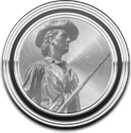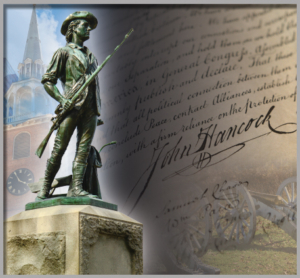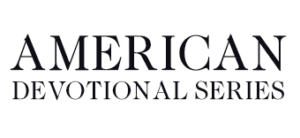American Devotional Series | Video Trailer
Click on the “play” button below to view the trailer for the “American Devotional Series: Part One | The Revolutionary War!”

Biblically based realities referenced during the time of the Revolutionary War.
Click on the “play” button below to view the trailer for the “American Devotional Series: Part One | The Revolutionary War!”
When it comes to the topic of our nation’s Christian heritage, you have two main schools of thought:
Much of the controversy stems from a ruling given by the Supreme Court in 1947 and the way they interpreted a phrase used by Thomas Jefferson in a letter he wrote to the Danbury Baptist Association in Connecticut in 1802. They declared that Jefferson’s usage of the term “the separation of church and state” constituted “the authoritative declaration of the scope and effect” of the First Amendment.1 Since then, that ruling has become the standard by which all public expressions of religious convictions have been measured, leading to an ever increasing limitation being put on the acknowledgement of God in governmental agencies as well as an ever lengthening shadow of doubt being cast on our nation’s religious heritage.
The debate is, at times, passionate and you’ve got buffoons on both sides of the aisle. The venom and the inaccuracies can culminate in a spectacle that can make it difficult to know which argument is correct. But there is a bottom line that transcends the way in which a solitary statement can be potentially dissected to the point where its meaning becomes illusive. That bottom line is to consider, not only the comment that was made, but also:
In other words, rather than just scrutinizing what was said, look at also why it was said, to whom was the person speaking and who was it that made the comment. At that point, you’ve got a full color, three dimensional rendering of what was stated as opposed to an intentionally cropped, black and white snapshot.
Using that kind of approach, let’s take a look at Thomas Jefferson and his exchange with the Danbury Baptists.

The Separation of Church and State is a phrase often used by people who want to insist that Christianity had no real role in our nation’s founding – cerntainly nothing that had any significant influence on those that articulated our cause, created our Constitution and fought the battles that culminated in the surrender of Great Britain.
You see this in comments like what you see below from the “Freedom From Religion” website:
The Christian Right is trying to rewrite the history of the United States, as part of their campaign to force their religion on others who ask merely to be left alone. According to this Orwellian revision, the Founding Fathers of this country were pious Christians who wanted the United States to be a Christian nation, with laws that favored Christians and Christianity.
Not true! The early presidents and patriots were generally Deists or Unitarians, believing in some form of impersonal Providence but rejecting the divinity of Jesus and the absurdities of the Old and New Testaments.
You have to be very selective in the information you use to validate such a statement. At the same time, you have to be willfully oblivious to the specific references to God and Christ that punctuate the relevant events and documentation that established the United States.
Below is a brief yet potent list:
During the Revolutionary War, Congress issued sixteen proclamations calling for a National Day of Prayer, Fasting and Humilation.
Take a look at the table below. You can click on the “page one | page two” links in the “Journals of the Continental Congress (1774 – 1875)” column to see the image of the text as it’s preserved in the Library of Congress and you can click on the “text” link to view a more “readable” version of the text.”
| Date / Proclamation | Journals of the Continental Congress (1774 – 1875) | text |
| July 20, 1775 | page one | page two | text |
| March 16, 1776 | page one | page two | text |
| December 11, 1776 | page one | text |
| November 1, 1777 | page one | page two | text |
| March 6, 1778 | page one | page two | text |
| November 16, 1778 | page one | text |
| March 20, 1779 | page one | page two | text |
| October 14, 1779 | page one | page two | text |
| March 11, 1780 | page one | page two | text |
| October 18, 1780 | page one | page two | text |
| March 20, 1781 | page one | page two | text |
| October 26, 1781 (British Surrender) | page one | page two | text |
| March 19, 1782 | page one | page two | text |
| October 11, 1782 | page one | text |
| October 18, 1783 | page one | page two | text |
| August 3, 1784 | page one | page two | text |

Peter Oliver was a lawyer and by the time of the Revolution had risen to the position of chief justice of the Superior Court in Massachusetts. He was incredibily wealthy, served in a variety of community and church positions and was fiercely loyal to the crown.
His perspective on the Revolutionary War was that of a Tory. Unlike the way in which most historians present John Adams and other such Patriots as noble statesmen, Oliver saw them as deluded troublemakers.
Not long after Cornwallis’ surrender, Oliver published a book entitled, “Origin and Progress of the American Rebellion: A Tory View.” What makes his perspective valuable is that he has nothing to gain by glamorizing or exaggerating any one aspect of the American effort to win their independence, in that he views all of it as a form of sedition.
At one point, he sets aside an entire section of his text to describe the “Black Robe Regiment,” or what he refers to as the “Black Regiment.”
